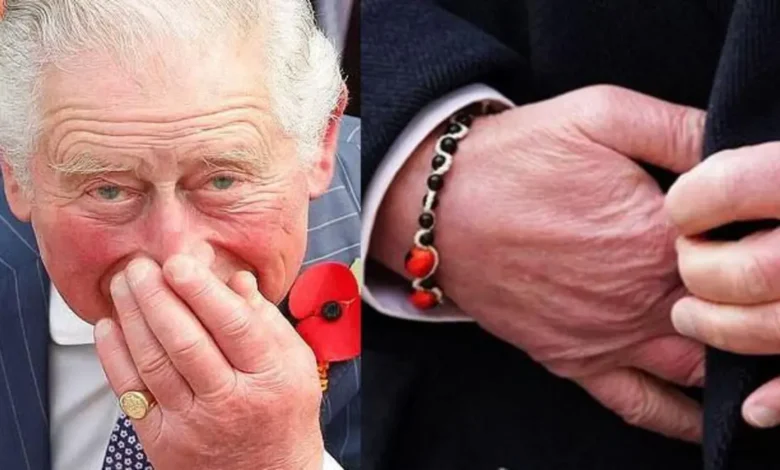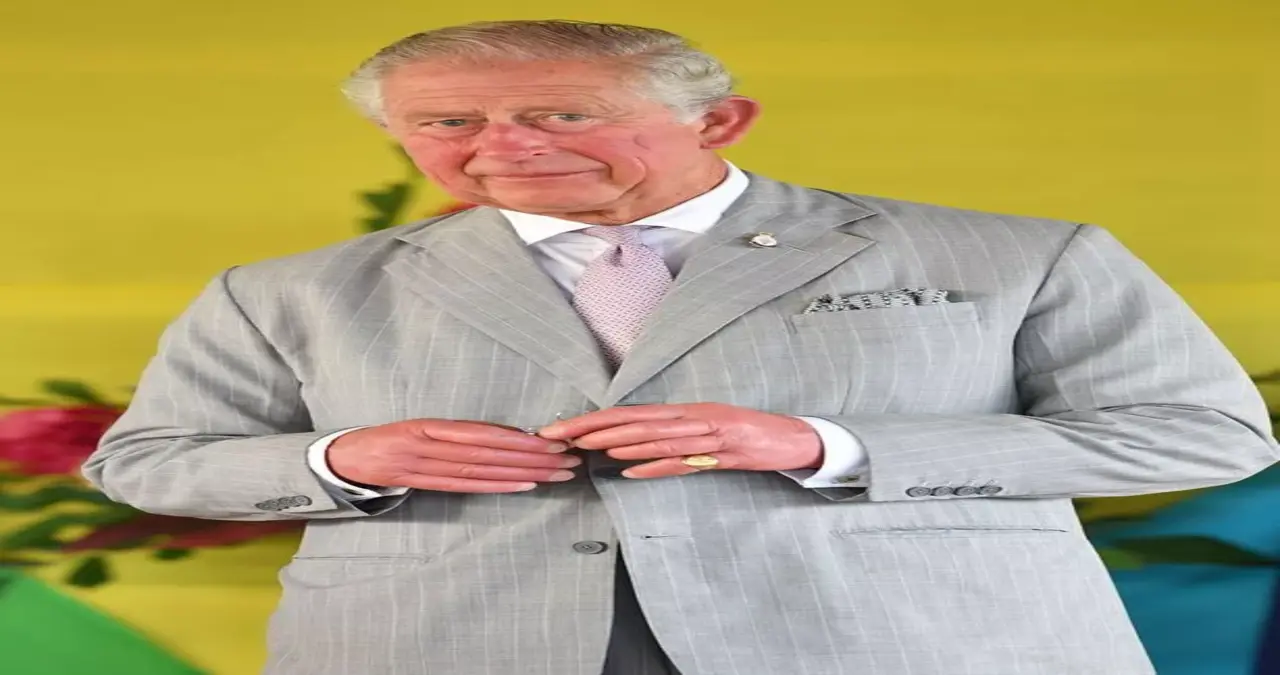King Charles Fingers: The Fascinationwith Royal Hands and Their Significance1

King Charles Fingers When we think of royal figures like King Charles, the first images that often come to mind are of regal attire, grand ceremonies, and royal portraits that capture the dignity and majesty of their lineage. However, something more personal and oddly fascinating has captured the public’s attention recently—the state of King Charles’ fingers.
The royal family is one of the most scrutinized institutions in the world, and every detail about its members is under constant observation. From their style choices to their public engagements, nothing escapes the public eye. King Charles’ fingers, in particular, have been the subject of various discussions, questions, and even debates. What makes this seemingly small detail so interesting? In this article, we delve into the attention surrounding King Charles’ fingers, why they’ve piqued curiosity, and what they can tell us about his health, history, and royal life.
The Unusual Attention to King Charles’ Fingers
In an age where people are fascinated by even the smallest aspects of public figures’ lives, it’s not unusual for something like King Charles’ fingers to become a topic of interest. The fascination stems from several observations made during public appearances, where people have noticed the king’s hands appearing somewhat different from what might be expected.
There’s no denying that King Charles has always been in the spotlight, whether it’s due to his long reign as Prince of Wales, his charity work, or his evolving role in the royal family. However, what’s been particularly notable in recent years is the attention given to his hands and fingers. While some people simply comment on his hands in a passing manner, others delve deeper into the question of what might be causing the noticeable appearance of his fingers.
Over time, photos and videos have showcased the King’s fingers looking swollen, sometimes with a somewhat bent or arthritic appearance. These features have caught the attention of the media and royal followers alike, sparking various conversations and inquiries into whether King Charles has any underlying medical conditions related to his hands.
The Medical Side of King Charles’ Fingers: Arthritis and Other Conditions
One of the primary health concerns often associated with King Charles’ fingers is the possibility of arthritis. Arthritis is a common condition, especially as people age, and it can manifest in various ways, including swollen, stiff, or bent joints. Given King Charles’ age, it’s not uncommon for people to wonder if his fingers are showing signs of this condition.
Arthritis can occur in different forms, such as osteoarthritis or rheumatoid arthritis, each having its own set of symptoms and causes. Osteoarthritis is the most common form and is often the result of wear and tear on the joints over time. On the other hand, rheumatoid arthritis is an autoimmune condition where the body mistakenly attacks its own tissues, often causing joint inflammation and deformities.
Although the palace has not publicly confirmed any specific diagnoses, some royal observers and medical professionals speculated that King Charles might be experiencing arthritis or similar health issues. This hypothesis is based on visual clues from public events, such as the noticeable swelling or stiffness in his hands. Of course, these observations are speculative, and we cannot definitively say that arthritis is to blame without confirmation from official sources.
Nonetheless, King Charles Fingers is not a rare condition for people in their seventies and eighties, and it’s certainly something that many individuals, including public figures like King Charles, might live with. Even if the King does indeed have arthritis, it doesn’t take away from his ability to fulfill his royal duties and continue his important work with resilience and determination.

The Role of Genetics and Aging in the Appearance of King Charles’ Fingers
Another factor contributing to the appearance of King Charles’ fingers could be the natural process of aging. As people grow older, various changes occur in their bodies, and these changes are often reflected in the skin, muscles, and joints. It’s completely natural for hands to show signs of aging, such as wrinkles, thinner skin, and changes in the shape of the fingers and joints.
Genetics also plays a significant role in how someone ages. King Charles, like many individuals, may have inherited certain genetic traits that influence the way his body ages. Some people are naturally predisposed to conditions like arthritis or other joint-related issues. Given the long history of royal lineage and the associated records of health and aging, King Charles’ fingers may be simply displaying the effects of his unique genetic makeup.
Additionally, the royal family’s health history can offer some insight into why certain physical traits might be more prominent. For instance, King Charles’ father, Prince Philip, had health issues in his later years, and it’s not uncommon for hereditary factors to play a role in the conditions or traits we inherit as we age. While the state of King Charles’ fingers is largely a topic of interest for royal watchers, it’s important to understand that these changes are a part of the natural aging process.
Cultural and Symbolic Interpretations of King Charles’ Hands
Beyond medical discussions, there is a cultural and symbolic side to the fascination with King Charles’ fingers. Royal family members are often seen as figures of strength, grace, and continuity, and every part of their appearance is subject to interpretation. People around the world view royals not just as family members, but as symbols of tradition and power. Therefore, something as small as a hand or a finger can take on a larger significance in the eyes of the public.
In many cultures, the hand is considered a symbol of authority, protection, and strength. It is no surprise that a king’s hands would attract attention as they often represent the leader’s ability to rule and provide for their people. Whether it’s through ceremonial gestures, like shaking hands with dignitaries, or the more subtle symbolism that comes with a royal wave, King Charles’ fingers carry an inherent weight.
Interestingly, royal hands have historically been a focus of attention. In previous generations, royal portraits often emphasized the hands, as they were symbols of power and governance. While we may not see such focus in today’s media, the enduring fascination with King Charles’ fingers reflects a lingering cultural view of the monarchy as a source of national identity and authority.
King Charles and the Public Perception of Royal Health
Public interest in the physical health of royal figures is nothing new. The health of monarchs has been a topic of conversation for centuries, especially in times when their physical well-being was directly tied to the stability of the monarchy. King Charles’ fingers, while seemingly insignificant, have become a lens through which the public views his overall health.
In the modern age, the media often scrutinize every aspect of a royal’s health, from their physical appearance to any visible signs of illness or aging. This scrutiny can be both positive and negative, and it has the potential to influence how the public perceives their monarch. While some view the King’s appearance as a natural part of aging, others may see it as a sign of vulnerability or a symbol of decline.
Despite the attention on King Charles’ fingers, it’s worth noting that the royal family, as a whole, has made significant strides in addressing health issues openly. Public awareness about mental health, for instance, has become a focal point for several royal family members. King Charles himself has spoken on numerous occasions about his passion for environmentalism, mental health, and various charitable causes, showing that his interests and leadership extend beyond personal health concerns.
This is the beginning of an in-depth article on “King Charles Fingers.” Let me know if you would like me to continue expanding on this, refine the content further, or focus on specific aspects of King Charles’ health and legacy.






